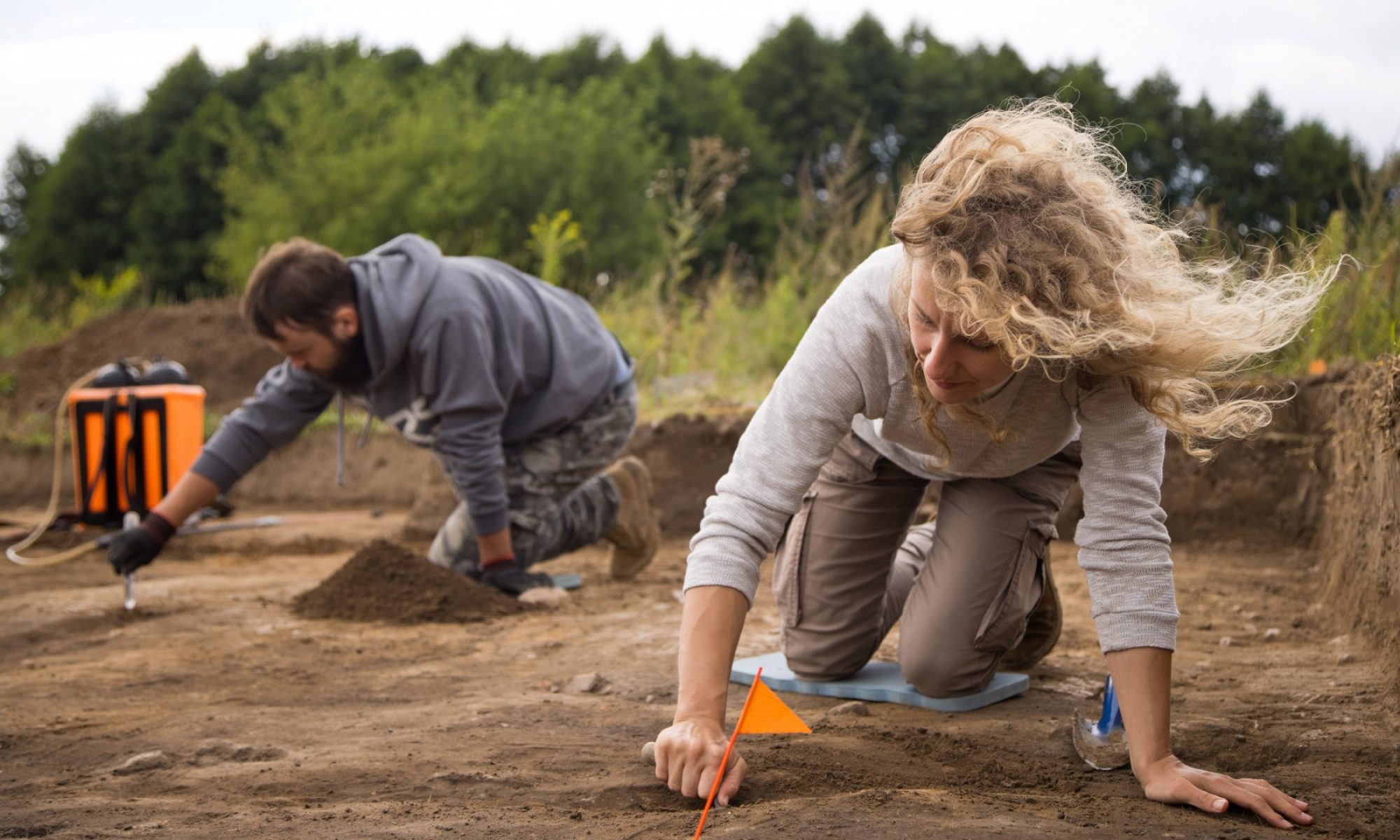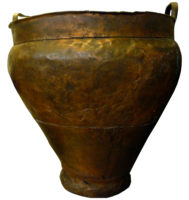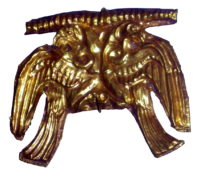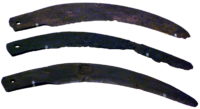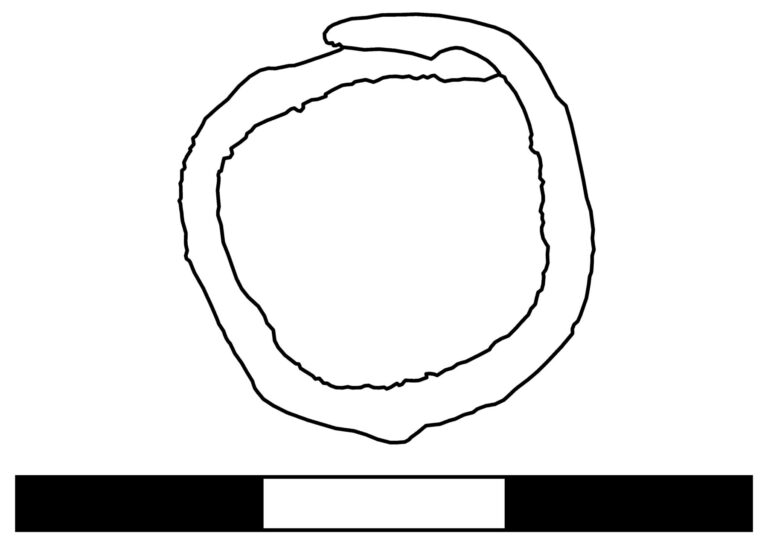prof. dr hab. Jerzy Miziołek
Department for Modelling and Digital Documentation
room: 3.28
Michał Dąbski (retired)
e-mail: studiomd@op.pl
phone number: +48 22 55 22 828
Miron Bogacki
e-mail: miron.bogacki@uw.edu.pl
phone number: +48 22 55 22 828
room: 1.19, 1.20
Marek Truszkowski
e-mail: marektruszkowski@uw.edu.pl
phone number: +48 22 55 22 804
Ireneusz Nazaruk
e-mail: ireneusznazaruk@uw.edu.pl
phone number: +48 22 55 22 840
Department for Archaeological Conservation
Direction:
Faculty of Archeology, 00-927 Warsaw, ul. Krakowskie Przedmieście 26/28, ‘Main School’
Employees:
dr hab. Paweł Szymański, prof. ucz.
Dr. Karolina Blusiewicz
Ireneusz Nazaruk, MA
Department for Non-Invasive Methods
address:
00-927 Warsaw, ul. Krakowskie Przedmieście 26/28, Szkoła Główna, tel. 22-55-22-816, room 3.16
employees:
Dr. Miron Bogacki
Wiesław Małkowski, MA
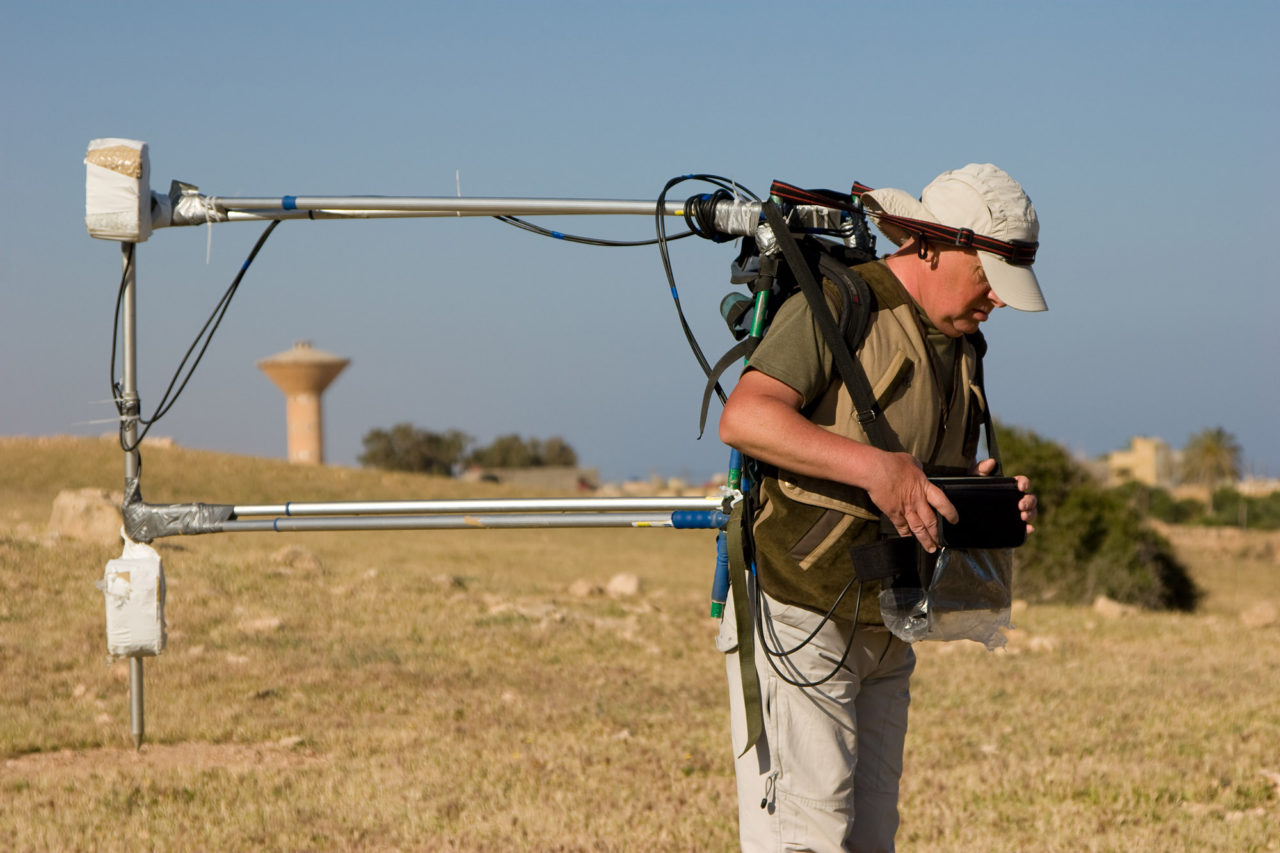
information
The Department conducts activities concerned with:
● geophysical methods applied to archaeology (geo-electric, magnetic and electromagnetic) ;
● integration of physical and geophysical methods for non-destructive analysis of archaeological sites and historical monuments;
in collaboration with the Department of hydrogeology and engineering geophysics the Faculty of Geology of the University of Warsaw
● integrated geophysical studies for geological, geotechnical, hydrogeological and environmental issues;
● acquisition and processing of seismic reflection and electro tomography data for archaeological purposes as well as for physical and mechanical characterization of materials;
● geophysical methods applied to non-invasive diagnosis of reinforced concrete structures;
● landslide study;
We conduct also studies related to airborne photography by means of drones, satellites or planes, Airborne Laser Scanning(ALS)and Light Detection and Ranging (LiDAR)with the purpose to take aerial prospection to another level by converting photographs into precise 3D terrain-mapping models with horizontal and vertical resolutions.
Defence of the doctoral dissertation of Nazarij Buławka
The Academic Council of Archaeology would like to inform that on 07.10.2020 at 13:00 the remote online public defense of the doctoral dissertation will take place.
Buławka-defense
Summary
Tomas Agnieszka
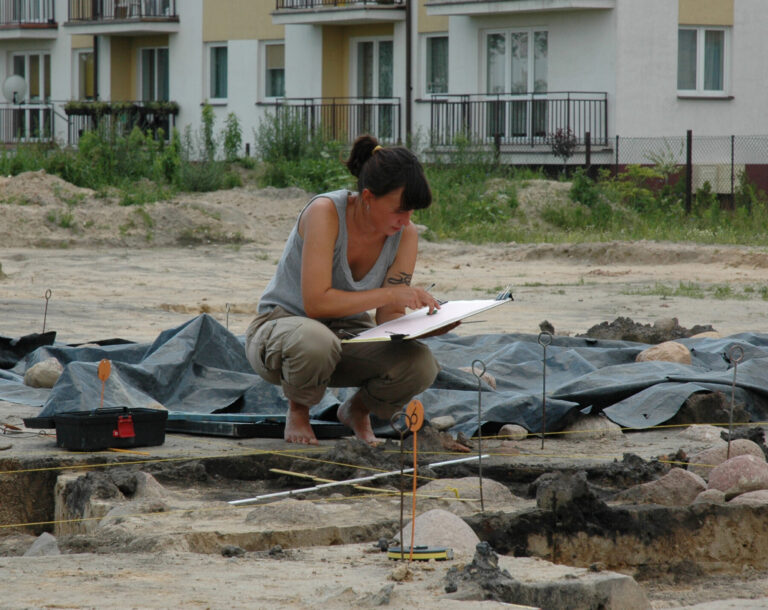
Assoc. Prof. Dr hab. Agnieszka Tomas
Department of Barbaricum and the Roman Provincial Archaeology
ORCID: 0000-0001-9578-8221
E-mail:
agnieszka.tomas@uw.edu.pl
Duty hours – summer semester 24/25:
Fridays 9.45-11.00 a.m., room 3.05
Research interests:
– Roman provincial archaeology (especially European provinces)
– Roman army and limes archaeology
– civil settlement along the Roman frontiers
– topography of Roman military bases and their transformation in Late Antiquity
Professional activity and important achievements:
Employee of the Institute (now the Faculty) since 2007. Coordinator and co-head of non-invasive and excavation research in Bulgaria, Romania and Hungary. Participant of excavations in the Crimea, Russia, and Poland. Scholarship holder of the S. Batory Foundation, the Foundation for Polish Science and the Brzezia Lanckoroński Foundation.
The Head of the Faculty of Archeology Archaeological Expedition of the University of Warsaw in Novae. Currently managing two research projects at the Roman legionary fortress in Novae (northern Bulgaria) and one in Germany (vicus Schwarzenacker).
Vice-Dean for Student’s Affairs in 2020/2021.
Research projects:
Discovering the praetorium. Layout, chronology and function of the commander’s residence in the Roman legionary fortress Novae (today Bulgaria). Polish National Science Centre, No. UMO-2024/53/B/HS3/03816
List of publications:
Monographs
- Inter Moesos et Thraces. The Rural Hinterland of Novae in Lower Moesia (1st – 6th centuries AD), Oxford 2016: Archaeopress (ISBN 9781784913694).
- Living with the Army I. Civil Settlements near Roman Legionary Fortresses in Lower Moesia, Warszawa 2017: Instytut Archeologii (ISBN 978-83-61376-35-4).
- Tomas (with contributions by: M. Jaworski, P. Jaworski, P. Wroniecki, M. Pisz oraz R. Stachowicz-Rybka, M. Moskal-del Hoyo, H. Winter, P. Janik, P. Dyczek, E. Genczewa, B. Kontny, M. Kot, Sz. Modzelewski), Living with the Army II. Novae (Lower Moesia). The Results of Remote Sensing and Field Walking Surveys, 2012-2014, WarsawStudies in Archaeology 4, Brepols Publishers, Turnhout 2022 ISBN 978-2-503-60399-5.
Articles in journals
- “Flasze gliniane z principia w Novae.” Novensia 12, 2000, (z: L. Kovalevskaja, T. Sarnowski): 107–122.
- “Flasze gliniane z Novae.” In: Materiały I Międzynarodowej Studenckiej Konferencji Archeologicznej “Europa Środkowo-wschodnia przez tysiąclecia”, Novensia 13, 2000: 49–67.
- “Flasze gliniane z budowli komendantury w Novae.” Studia i materiały archeologiczne 11, 2003, 157–164.
- “Jugs from Novae. A Study on Finds from 1960-99.” Novensia 14, 2003: 119–184.
- “Municipium Novensium? Report On The Field Survey At Ostrite Mogili, Veliko Turnovo District.” Światowit 47/A, 2006: 115–128.
- “Inter Moesos et Thraces. A Contribution To The Studies On The Rural Hinterland Of Novae In Lower Moesia.” Archeologia 58, (2007) 2009: 31–147.
- “Connecting to Public Water: The Rural Landscape and Water Supply of Lower Moesia.” Archaeologia Bulgarica 15/2, 2011: 59–72.
- “Reading Gender and Social Life in Military Spaces.” Światowit 49/A, (2009-2010) 2011: 139–152.
- “Canabae legionis I Italicae: state of research on civil settlements accompanying the legionary camp in Novae (Lower Moesia) compared to relevant Lower Danubian sites.” Światowit L/A, (2011) 2012: 155–168.
- “A New Dedicatory Inscription from Novae (Lower Moesia).” Światowit 52/A, (2013) 2014: 79–86.
- “A Six-century pottery kiln from Novae (Moesia secunda). A contribution to the local pottery manufacturing.” Archaeologia Bulgarica 19/3, 2015: 63–74.
- A. Tomas, Z. Kis, “A Roman site in the Sarviz River Valley (Pannonia Inferior). Preliminary results.” Acta Archaeologica Academiae Scientiarum Hungaricae 66/1, 2015: 203–215.
- “Life on the Frontier: Roman Military Families in Lower Moesia.” Studia Europaea Gnesnensia 16, 2017: 225-257.
- “Castra et canabae legionis. Organizacja przestrzeni i administracja cywilnych osiedli przy rzymskich obozach legionowych.” In: Między murami miasta a ścianami koszar – garnizony i historia miejska na przestrzeni dziejów [=Zeszyty Naukowe UJ. Prace Historyczne 145 (4)], Kraków 2018, 665–683.
- A. Tomas, M. Pisz, Al. Hegyi, “Non-destructive research in the surroundings of the Roman fort Tibiscum (Romania).” Archaeological Prospection 27/1, 2020: 1–20.
- A. Tomas, E. Jaskulska, J. Dworniak-Jarych, E Jęczmienowski, T. Dziurdzik, A. Mech, “The eastern necropolis of Novae.” Archaeologia Bulgarica 24/3, 2020: 37–63.
- “What’s for dinner today? Remarks on the provisions and diet of Roman soldiers during the Principate.” Studia Antiquitatis et Medii Aevi Incohantis 5, 2020: 128–154.
- A. Łajtar, T. Płóciennik, A. Tomas, “A Third-Century Senator Twice-Honoured in Novae.” Zeitschrift fur Papyrologie und Epigraphik 223, 2022: 249–253.
Monograph articles and chapters:
- Tomas, T. Sarnowski, “Marcus Aurelius Statianus from Lower Moesia. A Note on His Origin, Status and Business.” In: The Lower Danube in Antiquity (VI BC-VI AD), L. Vagalinski, N. Sharankov (eds), Tutrakan, Sofia 2007, 231–234.
- “Extramural area.” In: Novae. An archaeological Guide, Warszawa 2012, 77–92. (z: T. Sarnowski ed., A.B. Biernacki, M. Lemke, P. Vladkova).
- “Pachnące miasta czy slumsy? Urządzenia sanitarne w cywilnych osiedlach przy rzymskich bazach wojskowych.” In: Czystość i brud. Higiena w starożytności, W. Korpalska, W. Ślusarczyk (eds), Bydgoszcz 2013, 139–154.
- “Izv”n krepostnite steni.” In: Nove (Novae). Arheologičeski p”tevoditel Sofia-Warszawa 2014, 77–89 (z: T. Sarnowski ed., A.B. Biernacki, P. Vladkova, M. Lemke, E. Jordanov).
- Tomas, P. Wroniecki, “Roman legion and attached civilian settlement as a factor of Romanisation and landscape changes: a case of Novae (northern Bulgaria).” In: Reading Landscape as A Factor in Creating Identity. International Conference, Jarosław, 22-24 June, 2012, W. Bedyński, I. Povedàk (eds), Warszawa 2014, 49–61.
- “Non-destructive survey in Novae (Lower Moesia).” In: Limes XXII. Proceedings of the 22nd International Congress of Roman Frontier Studies Ruse, Bulgaria, September 2012, L. Vagalinski, N. Sharankov (eds.), Sofia 2015, 881–888.
- “Dionysus or Liber Pater? The Evidence of the Bacchic Cult at Novae (castra et canabae legionis) and in its Hinterland.” In: Ad fines imperii Romani. Studia Thaddaeo Sarnowski ab amicis, collegis discipulisque dedicata, A. Tomas (ed.), Warszawa 2015, 257–275.
- Tomas, M. Lemke, “The Mithreum at Novae Revisited.” In: Ad fines imperii Romani. Studia Thaddaeo Sarnowski ab amicis, collegis discipulisque dedicata, Tomas (ed.), Warszawa 2015, 227–247.
- “Female family members related to soldiers and officers of the legio I Italica. A case study.” In: Colonization and Romanization in Moesia Inferior. Premises of A Contrastive Approach, L. Mihailescu-Bîrliba (ed.), Kaiserlautern: Harrassovitz, 2015, 93–124.
- “Tracing Civilian Settlement in the Surroundings of Novae (Lower Moesia). Sources, Investigations, Results. In: Romans and the Others in the Lower Danube Region in the First Century BC – Third Century AD. Proceedings of the International Colloquium Tulcea, 7-11 of October 2015, Cr.-G. Alexandrescu (ed.), Biblioteca Istro-Pontică. Seria Archeologie, 12, Cluj-Napoca 2016, 191–204.
- “Pre-Roman Settlements in the Hinterland of Novae in Lower Moesia: a re-assessment of the displacements of the conquered tribes by the Romans. In: Romans in the Middle and Lower Danube Valley: Case Studies in Archaeology, Epigraphy, and History, first century BC – fifth century AD, E. de Sena, C. Timoc (eds), B.A.R. Int. Ser. 2882, Oxford: Archaeopress, 2018, 13–22.
- “Civil settlement at Novae (Moesia inferior).” In: Limes XXIII. Proceedings of the 23rd International Congress of Roman Frontier Studies Ingolstadt, Germany, September 2015, C.S. Sommer, S. Matesić (eds.), Ingolstadt 2018, 748–755.
- “The canabae legionis in Lower Moesia. Some observations.” In: Sacrum et profanum, E. Klenina (ed.), Novae. Studies and Materials, VI, Poznań 2018, 67–76.
- “Kłódka z wizerunkiem twarzy znaleziona w Novae.” In: Donum Cordis. Księga dedykowana Jerzemu Kolendo, K. Jakubiak (ed.), Warszawa 2019, 374–391.
- “Reconstruction process of the civil settlement near Novae (Moesia inferior). Epigraphic evidence.” In: Ad ripam fluminis Danuvi. Papers of the 3rd International Conference on the Roman Danubian Provinces Vienna, 11th-14th November 2015, Fr. Mitthoff, L. Zerbini, Ch. Cenati (eds), Tyche Suppl. 11, 2021, 39–66. Wien: Holzhausen.
- “Stamped Military Building Materials from the Funerary Context. The Case of the Eastern Necropolis of Novae (Moesia inferior).” In: Antiquitas Aeterna. Essays on Ancient Archaeology and History Dedicated to Leszek Mrozewicz on his 70th Birthday, K. Balbuza, M. Duch, Z. Kaczmarek, K. Królczyk, A. Tatarkiewicz (eds), Philippika, XX, 2021, 418–423. Wiesbaden: Harrassowitz.
- “When a cemetery must become forgotten. Funerary rites, commemoration and the fate of the eastern necropolis at Novae.” In: Nunc decet caput impedire myrto. Studies Presented to Professor Piotr Dyczek on the Occasion of His 65th Birthday, Warszawa 2021.
- “The Lower Moesian canabae in the 1st and the early 2nd” In: 4th International Conference on the Roman Danubian Provinces: Traian and the Danubian Provinces. The Political, Economic, and Religious Life in the Danubian Provinces. Zagreb – Croatia, November 15th to 17th, 2017, Proceedings, D. Toncinić (ed.), Zagreb 2021.
- The Roman Legionary Fortress at Novae. Research Projects Over the Last Decade (2013-2023), in: J. Bemmann, S. Ortisi, M. Schmauder (eds.), From Germania Inferior to Arabia Petraea: New Perspectives on Roman Legionary Camps. Limes und Legion 1 series. Reichert Verlag Wiesbaden, 2025, 265–278.
Field reports:
- Sarnowski, L. Kovalevskaja, A. Tomas, “Novae – castra legionis, 2006-2009. Preliminary report on the excavations of the University of Warsaw Archaeological Expedition.” Archeologia 59, (2008) 2010: 153–172.
- Sarnowski, A. Tomas, “The Roman Legionary Defences. Excavations of 2009 and 2010.” Światowit 48/A, (2006-2010) 2011: 185–186.
- Sarnowski, L. Kovalevskaja, “Principia et munitiones castrorum. Headquarters Building and Legionary Defences.” Światowit 50/A, (2011), 2012: 189–194.
- “Non-Destructive Investigations in the Extramural Area of Novae (Lower Moesia) in 2012.” Światowit 51/A, (2012) 2013: 157–161.
- Tomas, M. Jaworski, “Non-Destructive Archaeological Investigations in the Sárviz River Valley (Hungary).” Światowit 51/A, (2012) 2013: 171–176.
- Sarnowski, L. Kovalevskaja, A. Tomas, P. Zakrzewski “Novae 2012. Munitiones castrorum. Legionary defences, Światowit 51/A, (2012) 2013, 145–150.
- Tomas, E. Gencheva, “Geofizični izsledvaniâ na teritoriâta na kanabite na Novae.” AOR prez 2012 g., Sofia 2013, 250–251.
- A .Tomas, E. Gencheva, “Geofizični izsledvaniâ na teritoriâta na kanabite na Novae.” In: AOR prez 2013 g., Sofia 2014, 318–319.
- “Non-Destructive Investigations in the Extramural Area of Novae (Lower Moesia) in 2013.” Światowit 52/A, (2013) 2014: 197–206.
- Sarnowski, L. Kovalevskaja, A. Tomas, P. Zakrzewski, T. Dziurdzik, E. Jęczmienowski, “Novae 2013. Legionary Defences and Headquarters Building.” Światowit 52/A, (2013) 2014: 179–188.
- Sarnowski, L. Kovalevskaja, A. Tomas, R. Chowaniec, P. Zakrzewski, “Novae – castra legionis, 2010-1012. Preliminary report on the excavations of the University of Warsaw Archaeological Expedition.” Archeologia 62-63, (2011-12), 2014: 75–90.
- “Non-Destructive Investigations in the Extramural Area of Novae (Lower Moesia) in 2014.” Światowit 53/A, (2014) 2015: 205–212.
- “Geofizični proučvanija i obhoždanija v okolnostite na Nove.” In: AOR prez 2014 g., Sofia 2015, 409–410.
- “Mitreum do rimskija legionen lager v Novae.” In: AOR prez 2015 g., Sofia 2016, 443–447.
- Sarnowski, L. Kovalevskaja, A. Tomas, P. Zakrzewski, T. Dziurdzik, E. Jęczmienowski “Novae 2014. Legionary Defences and the Rear Part of the Fortress.” Światowit 53/A, (2014) 2016: 185–192.
- Sarnowski, L. Kovalevskaja, A. Tomas, P. Zakrzewski, T. Dziurdzik, E. Jęczmienowski “Novae – castra, canabae, vicus, 2013-2015. Preliminary report on the Excavations and Prospection Surveys of the University of Warsaw Archaeological Expedition.” Archeologia 65, (2014) 2016: 177–203.
- “Arheologičeski proučvanija na ukrepitelnata sistema i sondaži v razšireneto na Nove.” In: AOR prez 2016 g., Sofija 2017, 272–274.
- “Arheologičeski proučvanija na ukrepitelnata sistema i sondaži v razšireneto na Nove.” In: AOR prez 2016 g., Sofija 2017, 272–274.
- Sarnowski, L. Kovalevskaja, A. Tomas, T. Dziurdzik, E. Jęczmienowski, P. Zakrzewski “Novae 2015. Legionary defences and extramural settlement.” Światowit 54-55/A/B, (2015-2016) 2018: 322–328.
- “Razkopki v razširenijeto na Nove (Nove II).” In: AOR prez 2018 g., Sofija 2019, 237–239.
- “Iztočen nekropol na lagera i kăasnoantičnoto razširene na Nove (Nove II).” In: AOR prez 2019 g., čast 2, Sofija 2020, 678–681.
- “Novae. Iztočen nekropol i retentura sinistra.” In: AOR prez 2021 g., Sofija 2022: NAIM BAN (przyjęte do druku).
- „Novae – Sektor XIII (retentura)”, In: AOR prez 2022 g., Sofija 2023: NAIM BAN (przyjęte do druku).
Reviews:
- Michael Doneus, Christian Gugl, Nives Doneus, Die Canabae von Carnuntum eine Modellstudie der Erforschung römischer Lagervorstädte Von der Luftbildprospektion zur siedlungsarchäologischen Synthese, Der Römische Limes in Österreich, Heft 47, Wien 2013 (Archeologia 62-63, 2011-2012), 111–113.
- Tomasz Waliszewski, Elaion. Despre producția uleiului de măsline în Syro-Palestina romană și timpuriu bizantină… dar nu numai (Lucus. Acta Centri Lucusiensis 4A, 2016, Timişoara, 78–80.
- O perspectivă asupra Moesiei inferior prin prisma fundamentelor sale militare. Michał Duch, Economic Role of the Roman Army in the province of Lower Moesia (Moesia inferior), Acta Humanistica Gnesnensia, XVI, 5 maps, 4 figures, Gniezno 2017, 284 pp. (edition in Polish: Gospodarcza rola armii rzymskiej w prowincji Mezja Dolna (Moesia inferior), Studia Europaea Gnesnensia, XXIV, Poznań – Gniezno 2016, Lucus. Acta Centri Lucusiensis 5B, 2017, 105–108.
- Szilvia Biró, Die zivilen vici in Pannonien, Römisch-Germanisches Zentralmuseum, Monographien, 131, Mainz 2017, Bonner Jahrbücher 217, 2018, 546-550.
- Noi radiografii arheologice asupra spațiului nord pontic. The Crimea and the Northern Black Sea Coast in Archaeological Research 1956-2013 / Крым и северное побережье Чёрного моря в археологических исследованиях 1956-2013, M. Matera, R. Karasiewicz-Szczypiorski (eds.), Światowit Supplement Series C: Pontica et Caucasica, vol. I, Warszawa 2017), Lucus. Acta Centri Lucusiensis 6B, 2018, 82–87.
Popularization:
- “Na straży granic rzymskiego cesarstwa.” In: Blisko i daleko. Księga Jubileuszowa Instytutu Archeologii Uniwersytetu Warszawskiego, Warszawa 2009, 203-207 (z: T. Sarnowski).
- “Trochę Rzymu w północnej Bułgarii.” Z bliska i z daleka 1, 2011: 72-77 (z: T. Sarnowski).
- “Armia rzymska i prostytucja – mit czy rzeczywistość?” Archeo UW 1, 2013: 41-53.
- “Po co Ty się malujesz?! O rzymskim poprawianiu urody i niezmiennej naturze jego krytyków.” Gazeta Biskupińska 6, 2016: 2–3.
Forging Society at Late Bronze Age Mycenae
Person conducting research: Dr Stephanie Aulsebrook
Country: Greece
Site name: Mycenae
Type of site: settlement and extra-mural cemeteries
Involved institutions: WAUW
Research Assistants: Monika Łapińska, Paulina Jurkowska
Date: July 2019–July 2023
Project financing: SONATA 14 NCN (DEC-2018/31/D/HS3/02231)
Project Summary: This project focused on Mycenae, the foremost centre on mainland Greece during the Late Bronze Age (17th–11th centuries BC) and the relationship between its inhabitants and metals. Metals have a very varied role in prehistoric societies. They can be used to make a wide range of objects, including tools, weapons, vessels, jewellery and armour. Until now, most research had just focused on the relationship between the upper classes and metal, so this project aimed to consider a broader range of people.
Project Methodology: the project collated together into a database all the available information on metal objects that have been excavated at Mycenae since 1876. Their distribution within the site was then analysed, along with their types and other important features.
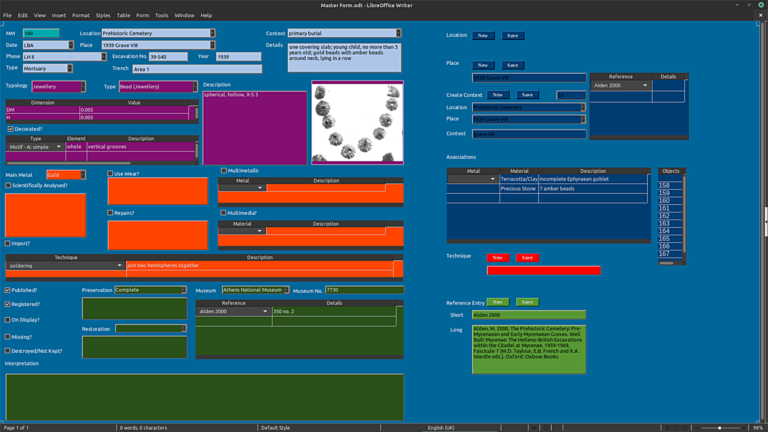
The database currently contains more than 15000 metal artefacts. Of those, more than half come from documented Late Bronze Age contexts. The majority come from mortuary contexts; for example, the famous Circle A shaft graves discovered by Heinrich Schliemann in 1876 account for more than 2500 of these artefacts alone.
The project involved three research expeditions, to the National Archaeological Museum at Athens, the Archaeological Museum at Mycenae and the Mycenae Archive at the University of Cambridge, UK. Visits to the museums enabled hands-on analysis of a selection of objects that has provided vital evidence about their lifecycles. Access to the original fieldnotes at the archive has allowed past archaeological recording strategies for metal artefacts to be reconstructed and has uncovered some interesting finds of metal objects that have never been published.
Project Results: the project had three main questions:
1) which activities involved metals and which did not?
Metals were found to have been used in a wide variety of activities, such as making objects, cooking, eating and drinking, personal adornment, warfare and hunting, etc. However, some types of object were never made in metal, such as certain specialised vessel shapes. Metals were apparently rarely used within textile production, in comparison to other crafts, and although gilding was a widespread form of decoration particular types of ornament were never gilded. Therefore metal was not ubiquitous, and even in the activities when it was used other materials, like ceramic or glass, were often used too.
2) how was access to metal controlled at Mycenae?
The contemporary textual records focus on the disbursement of metal by the palace, but have little evidence about access to metals for ordinary households and independent workshops. The project found that across most of Mycenae it seems that metals were melted down and recycled, showing that people were careful not to waste metal. One household, situated outside the citadel, threw away broken metal objects, suggesting they had confidence in being able to access a steady supply whenever they needed it. The complex use life of some objects (see below) indicate that the palace’s control over the metal supply was less tight than previously supposed. There is tentative evidence to indicate that some people, perhaps slaves, were not allowed to use metals for personal adornment.
3) what was the typical lifecycle for different kinds of metal artefacts and can we see deviations?
Studying metal objects under a microscope provided new insights into the lifecycles of some specimens. This chisel fragment and finger ring both had interesting stories: the chisel fragment was deliberately broken off (perhaps from a tool that was too damaged for further use) and was then used as a platform for sawing, as shown by the cut marks; the finger ring was roughly made from a spare piece of bronze wire, rather than being specially cast and shaped like most Mycenaean jewellery.

|
The unusual stories of these two objects show that the production and use of metal artefacts at Mycenae was more complex than previously thought; control over metal was not completely in the hands of the palatial authorities. The ring in particular shows how desirable metal was, and how people sought ways to engage with it personally, even when they could not afford real jewellery.
Publications (all open access):
Aulsebrook, S. 2022. Recent developments in archaeometallurgical research: the Bronze Age Greek Mainland, Crete, and the Cyclades. Archaeological Reports 68: 109–132.
Aulsebrook, S. 2022. The impact of archaeological recording on the study of metal artefacts. Mycenae 1939: a case study. Annual of the British School of Athens 117: 415–455.
Aulsebrook, S. 2022. Forging ahead or foiled again? A new direction for cross-craft analysis with case studies from Late Bronze Age metalworking in the Aegean, in S. Aulsebrook, K. Żebrowska, A. Ulanowska and K. Lewartowski (eds.) Sympozjum Egejskie. Papers in Aegean Archaeology 3. Turnhout: Brepols: 99–112.
Aulsebrook, S. 2020. Understanding the role of metal within the Late Bronze Age community at Mycenae: challenges and potential approaches. Polish Archaeology in the Mediterranean 29(2): 237–264.
Aulsebrook Stephanie

Dr. Stephanie Aulsebrook
Department of Aegean and Textile Archaeology
e-mail:
s.aulsebrook@uw.edu.pl
duty hours:
Wednesdays 11:30-12:30 room 3.14 (online when not in Warsaw; please email to make an appointment)
teaching arrangements (Winter Semester 2025-2026):
All classes in first full week of October in-person (6th-8th October). Remaining classes in October will be conducted online. Please make contact if you need assistance with hybrid teaching arrangements.
research interests:
– Aegean Late Bronze Age
– metal artefacts
– object biographies
Forging Society at Late Bronze Age Mycenae
Aegean Metalware – Collaboration with Dr Christina Clarke (ANU)
bibliography:
Aulsebrook, S. 2022. Recent developments in archaeometallurgical research: the Bronze Age Greek Mainland, Crete, and the Cyclades. Archaeological Reports 68: 109–132.
Aulsebrook, S. 2022. The impact of archaeological recording on the study of metal artefacts. Mycenae 1939: a case study. Annual of the British School of Athens 117: 415–455.
Aulsebrook, S. 2022. Forging ahead or foiled again? A new direction for cross-craft analysis with case studies from Late Bronze Age metalworking in the Aegean, in S. Aulsebrook, K. Żebrowska, A. Ulanowska and K. Lewartowski (eds.) Sympozjum Egejskie. Papers in Aegean Archaeology 3. Turnhout: Brepols: 99–112.
Aulsebrook, S. 2022. All’s well that ends well. An in-depth look at how objects entered Aegean Late Bronze Age wells, in S. Aulsebrook, K. Żebrowska, A. Ulanowska and K. Lewartowski (eds.) Sympozjum Egejskie. Papers in Aegean Archaeology 3. Turnhout: Brepols: 163–166.
Aulsebrook, S. 2020. Understanding the role of metal within the Late Bronze Age community at Mycenae: challenges and potential approaches. Polish Archaeology in the Mediterranean 29(2): 237–264.
Aulsebrook, S. 2019. Crisis at the Cult Centre: Evidence from the Megaron Basements, in K. Żebrowska, A. Ulanowska and K. Lewartowski (eds.) Sympozjum Egejskie. Papers in Aegean Archaeology 2. Warsaw: University of Warsaw Press: 111–121.
Aulsebrook, S. 2019. Materialising Mythology: the Cup of Nestor from Shaft Grave IV at Mycenae, in K. Żebrowska, A. Ulanowska and K. Lewartowski (eds.) Sympozjum Egejskie. Papers in Aegean Archaeology 2. Warsaw: University of Warsaw Press: 79–89.
French, E.B. and S. Aulsebrook. 2018. Italy and Mycenae, in M. Bettelli, M. Del Freo and G.J. van Wijngaarden (eds.) Mediterranea Itinera. Studies in Honour of Lucia Vagnetti. Rome: CNR – Istituto di studi sul Mediterraneo antico: 67–76.
Demakopoulou, K. and S. Aulsebrook. 2018. The Gold and Silver Vessels and Other Precious Finds from the Tholos Tomb at Kokla in the Argolid. Annual of the British School at Athens 113: 119–142.
Aulsebrook, S. 2018. Chicken or egg? Rethinking the relationship between the silver and tinned ceramic vessel assemblages. Annual of the British School at Athens 113: 75–118.
Aulsebrook, S. 2018. Rethinking standardisation: the social meanings of Mycenaean metal cups. Oxford Journal of Archaeology 37: 147–163.
Aulsebrook, S. 2017. Repair, recycle or modify? The response to damage and/or obsolescence in Mycenaean metal vessels during the Prepalatial and Palatial Periods and its implications for understanding metal recycling. Studi Micenei ed Egeo-Anatolici NS 3: 7–26.
Aulsebrook, S. 2017. Late Bronze Age manipulation of light and colour in metal, in C. Duckworth and A. Sassin (eds.) Colour and Light in Ancient and Medieval Art. London: Routledge: 35–45.
Aulsebrook, S. 2016. Placed with care: interaction with decorated Mycenaean metal vessels, in M. Mina, Y. Papadatos, and S. Triantafyllou (eds.) An Archaeology of Prehistoric Bodies and Embodied Identities in the Eastern Mediterranean. Proceedings of a conference held 10-12 April 2012, Nicosia, Cyprus. Oxford: Oxbow Books: 71–77.
Aulsebrook, S. 2015. Retrieving capacity data from crushed lead vessels: an example from the House of Lead, Mycenae. Journal of Mediterranean Archaeology and Archaeometry 15.3: 201–211.
Marea – settlement and cemetery (Hellenistic, Roman, Byzantine and Early Islamic periods)
Person conducting excavation: prof. Tomasz Derda
Country: Egypt
Site name: Marea
Type of the site: settlement and cemetery (Hellenistic, Roman, Byzantine and Early Islamic periods)
Involved institutions: Faculty of Archaeology, University of Warsaw; Polish Centre of Mediterranean Archaeology University of Warsaw; Archaeological Museum in Krakow
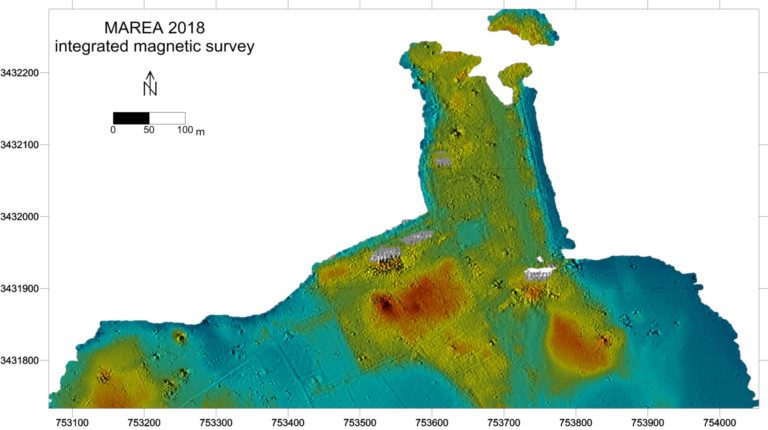
Description of the research: On the southern shore of Lake Mariout, 45 kilometres west of Alexandria, Polish archaeologists have been excavating for several years the ruins of a large Byzantine city. The city, patiently uncovered structure after structure, was built exactly on the spot of an industrial centre and a harbour which functioned until the third century AD. Traditionally, the place was called Marea, following its (uncertain) identification with the most important urban centre in this part of the Mediterranean before the foundation of Alexandria of which we learn from Herodotus and Thucydides. A great transept basilica built in the end of the fifth century, the second largest church in Egypt (49 x 47 m), is the most magnificent building on the site. Next to the basilica, the archaeologists uncovered two bath complexes, a large house dating to the Late Antique period, warehouses, and latrines. Four massive piers (the longest measuring over 120 metres) extending deep into the lake date to the Roman period; they could serve several ships simultaneously. We know that large production workshops manufacturing pottery on a mass scale, as well as glass workshops, were located nearby. The apse of the basilica was constructed right on a pottery kiln which with its diameter of more than eight metres is one of the largest in Egypt. The kiln was used until the beginning of the third century AD, as indicated by the chronology of the last batch of amphorae prepared for firing which was found under the apse. Our neighbours on the site, archaeologists from France, have discovered on the peninsula a warehouse building functionally connected with the harbour. This structure was in use in the Ptolemaic and Early Roman periods. The remains, dated to the first century BC – beginning of the third century AD point to an intensive industrial exploitation of the area. We are in a region that produced wine on a great scale and exported it in amphorae which were also locally manufactured. The size of the kiln, the proportions of the warehouse, and the sweeping scale of the piers’ construction show that “Marea” was at the same time a remarkable industrial centre and a significant harbour.
Department of Classical Tradition in the Visual Arts
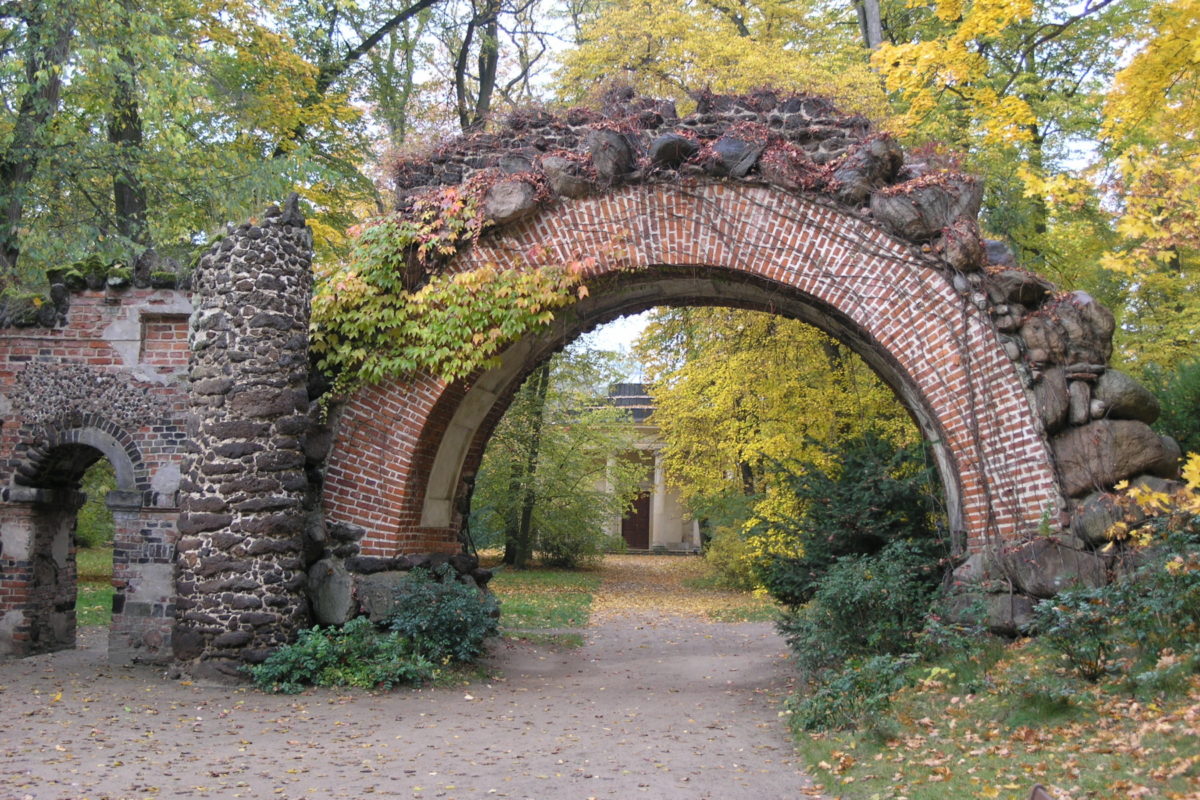
Address: 00-927 Warsaw, Krakowskie Przedmieście st. 26/28, Szkoła Główna, phon. 55 22 815, pok. 3.15, ul. Krakowskie Przedmieście 32, Pałac Tyszkiewiczów-Potockich, phon. 55 21 523, room B14.
Head of department:
prof. Jerzy Miziołek
Eployees:
PhD Jerzy Żelazowski
PhD hab. Hubert Kowalski
‘Let us return to the classics and a veritable renaissance of form and content will ensue.’ These words of a 19th-century thinker could be used as the motto to best describe the Department’s modus operandi; its main aim is to explore all manifestations of the reception of Greek and Roman art—from the late Antique period to the beginning of the 21st century. Being the outcome of a fascination with archaeology and antiquarian studies, they are ubiquitous in the visual culture of subsequent periods: the Renaissance, the Enlightenment and the classicism of recent centuries. Detailed studies of the history of classical archaeology and thousands of monuments—both Polish and foreign—from a realm which lies somewhere between archaeology and art history, await in-depth studies and interdisciplinary exploration.
Grants:
Rome and Warsaw: reception of the Antique and artistic education during the Enlightenment period (NPRH2/H11/81/2013)
Reconstruction and display of fragments of the Vasa residences found in the bed of the Vistula river. Regaining national heritage while undertaking interdisciplinary research of the river bed (NPRH/11H 13 0031 82/2015)
Excavations:
Archaeological research: campus of the University of Warsaw
Archaeological research: 517 km of the Vistula River
Archaeological investigation in Italy (Locri, Volterra), in preparation
